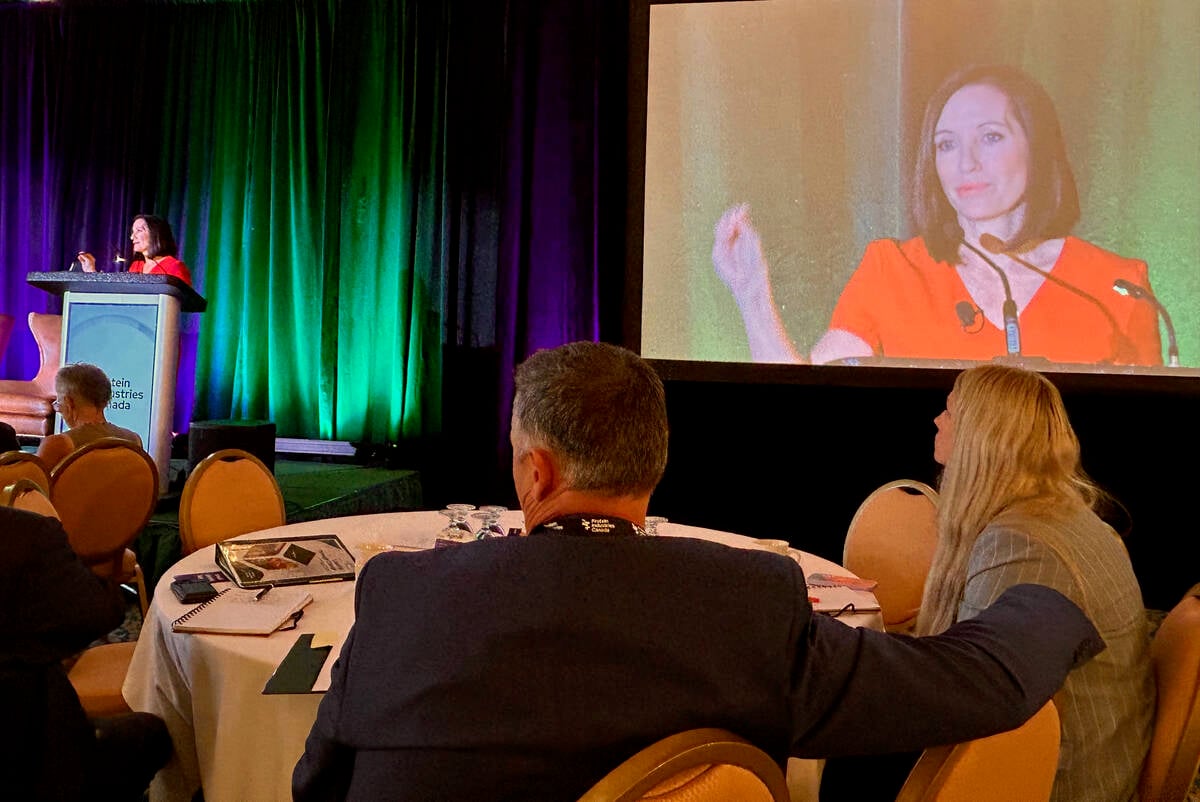Educating customers | Surveys show Canadian consumers are concerned but uninformed about animal welfare issues
EDMONTON — Science has solved a lot of problems and answered a lot of questions, but it doesn’t have all the answers, says an animal welfare specialist.
“Science can tell you what you can do, but not necessarily what you should do,” Dr. Michael von Massow of the University of Guelph told the recent Alberta Farm Animal Care conference.
“You can’t beat consumers over the head with science. Don’t depend on science.”
Farmers believe they treat their animals humanely and use the latest science-based information and research to make their decisions, but they need to base their animal welfare decisions on more than science, said von Massow.
Read Also

Canada told trade crisis solutions in its hands
Canadians and Canadian exporters need to accept that the old rules of trade are over, and open access to the U.S. market may also be over, says the chief financial correspondent for CTV News.
“Consumers say it’s not just about science. Science can tell us what we should do, but it is not the only thing. It can’t influence the consumer. We have to be willing to listen to the consumer,” he said.
“Speak to people in a way that matters to them. If science doesn’t matter to them, quit hitting them on the head.”
Agriculture surveys have found that animal welfare is in the conscience of Canadians, but consumers don’t know where to turn if they have questions. Instead of going to livestock groups for answers, they are most likely to turn to animal welfare groups.
“You have got to get to a spot where they are asking us for the answers,” von Massow said.
He said surveys show consumers are aware of animal welfare but not sure what is happening on the farm.
More than half of the people surveyed believed government should take a strong role in ensuring animal welfare.
“People feel pretty good about what we are doing, but there is not really an understanding of what we do,” he said.
Von Massow also said consumers indicate they would like stickers on packages assuring them the animal is raised humanely. While he doesn’t believe retailers want packages with dozens of tiny assurance stickers, it does mean consumers want reassurance.
“Consumers generally think farmers are doing a good job and trust the industry.”
He said livestock producers wonder if consumers would be willing to pay more for food they know is guaranteed to be raised in a healthy, happy environment, but the reality is no one knows.
Consumers have indicated in surveys that price, freshness, taste and safety are their top food priorities. Animal welfare is listed as a secondary priority.
When asked, consumers don’t know if it’s better for chickens to be free run or free range, have enhanced cages or scratch boxes. They don’t know if pork should be free run or in farrowing crates.
“Just under half (of) consumers surveyed think they have a lot of knowledge of how animals are raised, but in reality they don’t really,” he said.
Less than one-third knew a cow had to have a calf before it produced milk.
Sixty-five percent said gestation stalls would improve the welfare of pigs and 86 percent said more space would improve the welfare of pigs.
Von Massow said both findings indicate that consumers have little idea how livestock is raised.
When asked, 36 percent of consumers said antibiotics increase animal welfare and 40 percent said antibiotics decrease animal welfare. Twenty-two percent believed castration increases animal welfare and 36 percent said castration decreases animal welfare.
He said it’s easy for farmers to look at the survey results and shake their heads, but they need to keep trying to communicate with consumers about the good job they are doing looking after animals.
He said the food business is going to be an exciting place, but producers can’t put their heads in the sand and believe that consumers will trust them. They have a good story to tell that can convince people to feel good about agriculture, he added.
“There is an increasing awareness and concern about animal welfare, but there is a significant knowledge gap. That’s good, but it’s risky.”
















